BE AN INSTRUCTOR
To become an instructor, you must be nominated by a CI to take part in two instructor training courses which you must complete satisfactorily, each arranged by British Skydiving and held midweek for up to five days at drop zones around the UK.
The first course qualifies you as a Basic Instructor or BI, with permission to complete basic instructional duties back at your home DZ. This will be under supervision of the Chief Instructor (CI) or other experienced instructors at your British Skydiving Affiliated Parachute Training Organisation (PTO).
After at least six months of this, when your CI thinks you are ready, you will take the second course. If you complete this one successfully, you become a fully qualified instructor.
“Everyone remembers their first skydive. And do you remember who taught you? Too right you do!”
BASIC INSTRUCTOR COURSE
The BI course is very much a teaching course – you go on it to learn how to be an instructor. Even if you already have teaching experience, you are there to learn. Experienced instructor examiners will give lessons on instructional technique, and in turn you will give practice lessons to your fellow instructor candidates.
You’ll also be able to act as a student for them, and at the end of each practice lesson you’ll discuss how it went with your fellow course mates and the examiners who will coach you on instructional technique and make you better next time!
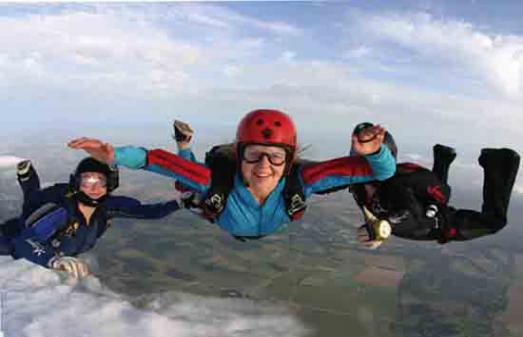 Liz Ashley takes her sister Rose for an AFF jump with Adele Marshall. Photo: Ash Hollick
Liz Ashley takes her sister Rose for an AFF jump with Adele Marshall. Photo: Ash Hollick
As an instructor, your CI will need you to be capable of much more than just teaching in a classroom. You may sometimes find yourself in tricky situations, by virtue of your rating making you the voice of authority/experience. For example, if an experienced jumper picks up a potential problem on a flightline check but isn’t sure, you may be the only person available to make a spot decision. It’s your call – ground someone unnecessarily and they’ll resent the lost jump ticket, but let someone go when they shouldn’t and the ensuing accident will be on your conscience. So the BI course also includes lectures on other subjects relevant to instructors such as rigging, first-aid, incident procedures, flying for parachuting, instructor responsibilities and drop zone management.
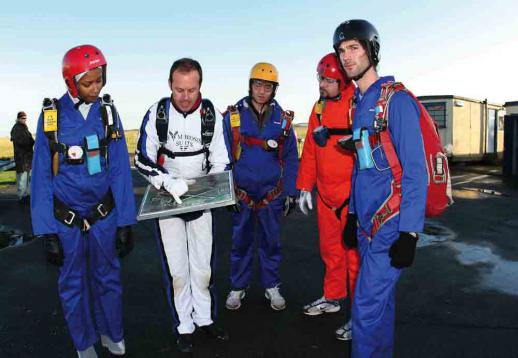 Drop Zone briefing
Drop Zone briefing
TYPES OF INSTRUCTOR
Just as there are three ways into the sport, so there are three types of instructor rating. Static line progression or RAPS (Ram-Air Progression System) is referred to as the category system. Accordingly, the two instructor courses are Category System Basic Instructor (CSBI) followed by Category System Instructor (yep, that makes it CSI). Tandem gives us TBI and TI, while Accelerated Free Fall gives us AFFBI and AFFI. The BI courses are run together during the same week, so CSBIs will train alongside AFFBIs and TBIs.
On successful completion of the BI course, the new instructors will be able to teach real students under supervision back at their home drop zone. So a CSBI or AFFBI could teach a ground school or do student talkdown, and a TBI could brief a tandem student and fit their harness. However, the TBI cannot take students on real tandem jumps, and the AFFBI cannot jump with real students doing AFF levels.
You can find the full details of what can and cannot be done in the Operations Manual and the Instructor Manual.
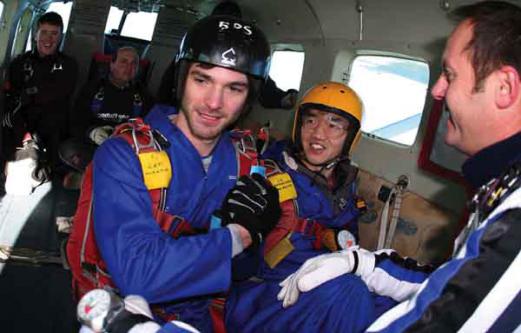 On the way to altitude.
On the way to altitude.
REQUIREMENTS
As you would imagine, you can go from a CSBI rating to a CSI course, an AFBI rating to an AFFI course, and a TBI rating to a TI course. As an added quirk, you can also go on an AFFI course as a CSBI or CSI (ie, not necessarily an AFFBI), and on a TI course from any previous instructional rating, provided you meet the jump number and freefall time requirements. These are 800 jumps and eight hours for tandem, and 1000 jumps and ten hours for AFF.
You also need a British Skydiving C Licence to become a static line or tandem instructor, a D Licence for AFF, and a packing certificate and two years in the sport for all three ratings. If you will be talking down students rather than strapping them to the front of you, you will also need to learn how to use a radio correctly, plus take a test to gain a parachuting radio operators certificate of competence from the Civil Aviation Authority.
AFFI candidates must also hold a British Skydiving Canopy Handling Coach qualification, and this is a useful step for CSIs too.
“You’ll be helping many new skydivers to take that first leap and achieve something they dreamed of.”
So far, so good. You’ve jumped through whichever of the hoops in the last paragraph applied to you, and successfully completed whichever BI course you chose to take. Now comes the real learning. You’ll spend a minimum of six months (this can be less for tandem) practising your new skills and fine-tuning them back at your home DZ.
This is a task generally agreed to be hard work but very rewarding. It’s not so much that any part of it is particularly difficult, it’s more just the sheer volume of work to be done. If, like most, you only jump on weekends, then expect the majority of them to be dedicated to working towards your second British Skydiving course.
Instructor Medical – Frequently Asked Questions
INSTRUCTOR COURSE
The second course is usually shorter than the first. Although a whole five days are still put aside for it, it may finish in as few as three. There is ‘no more Mr Nice Guy’ – you are here now to prove yourself. The examiners have to agree that you are responsible enough to be trusted with a full instructor rating. I have heard more than one examiner use the criterion ‘Would I let this instructor teach my daughter?’.
“It’s the little things that make you smile… the fond memories and constant ‘thank yous’ from eternally grateful students”
On all three versions of the second course (CSI, TI and AFFI) your instructional technique is assessed in the classroom first and foremost. If you can’t teach to the desired standard, or if you fail a closed-book written exam on the Operations Manual, then you will be on your way home before Monday is over. CSI candidates must teach lessons from the ground school syllabus and RAPS progression briefs. Similarly, AFFI candidates will be called upon to teach first jump lessons and also briefs for the various AFF levels. TIs must be able to do a flawless tandem brief.
CSIs will have their dispatching technique evaluated, with experienced jumpers acting as static line students. AFFIs will do six skydives simulating different AFF levels, with an examiner acting as the student and performing as realistically as possible, including intentionally spinning to test the instructor’s ability to cope. TIs will do their first live tandem jumps, initially with a heavy bag strapped to their front before progressing onto live students (during the course these will be experienced skydivers), and will complete between nine and twelve tandem jumps in total.
QUALIFICATION
On successful completion of the second British Skydiving course, you get a certificate to commemorate your new rating, freedom to teach unsupervised, and a warm fuzzy feeling that all the hard work has paid off!
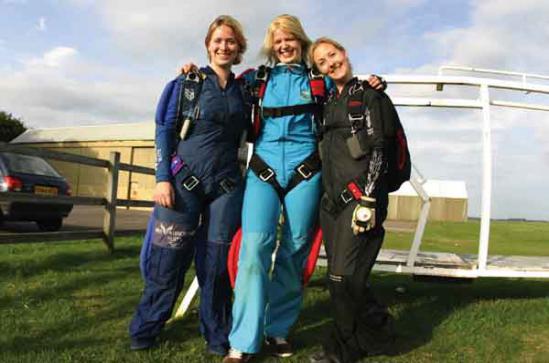 Liz Ashley, her sister Rose and Adele Marshall are all smiles after their jump.
Liz Ashley, her sister Rose and Adele Marshall are all smiles after their jump.
BY LIZ ASHLEY
Liz Ashley is a CSI, AFFI, rigger, and an FS, CH and wingsuit coach. She has been instructing since 2003. Since August 2010, Liz Ashley has been Editor of Skydive the Mag.
This article first appeared in ‘Skydive the Mag’ in August 2009
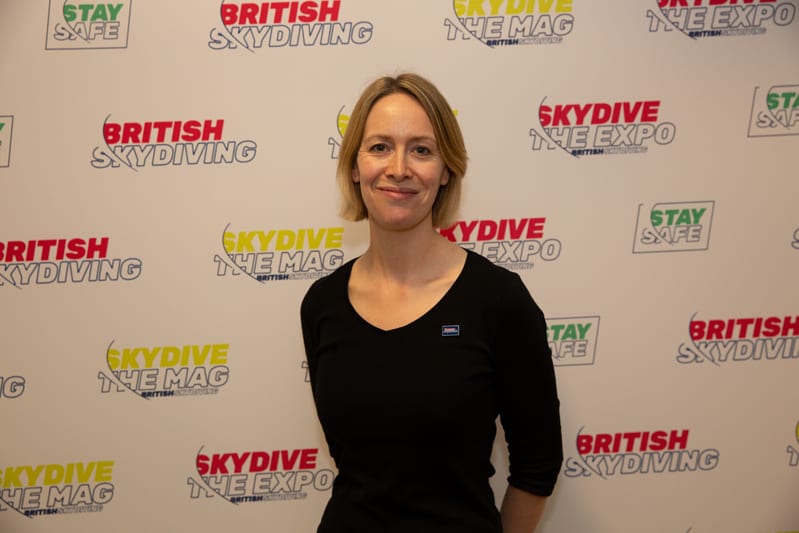
PLEASE NOTE: To be eligible to start training to become an instructor, you must first meet the admission requirements set out in Section 4 of the Operations Manual Among these are that you must have been involved with sport parachuting for two years or more and hold a British Skydiving C Licence and a Packing Certificate. Eligibility to start training as an instructor is on the written recommendation of a Chief Instructor (CI) of a British Skydiving Affiliated Parachute Training Organisation (PTO), who must have known you for a minimum of six months and have seen you parachuting regularly during that period. For more information about becoming an instructor, please see the British Skydiving Operations Manual Section 4, Instructors; or ask the Chief Instructor at your British Skydiving Affiliated PTO.
Instructor Course Dates 2024
| Date | Venue | Course |
| 12 – 16 February | APA Netheravon | Basic Instructor, Category System Instructor, Advanced Instructor, Examiner |
| 18 – 22 March | Sky-High Skydiving | Tandem, AFF, Pre-Advanced, Observer |
| 15 – 19 April | Skydive Langar | Tandem, AFF, Pre-Advanced, Observer |
| 13 – 17 May | Skydive Strathallan | Basic Instructor, Advanced Instructor, Examiner |
| 20 – 24 May | Skydive Strathallan | Category System Instructor |
| 10 – 14 June | Skydive Sibson | Tandem, AFF, Pre-Advanced, Observer |
| 8 – 12 July | Skydive Hibaldstow | Tandem, AFF, Pre-Advanced, Observer |
| 12 – 16 August | Skydive Tilstock | Basic Instructor, Advanced Instructor, Examiner |
| 19 – 23 August | Skydive Tilstock | Category System Instructor, Tandem, AFF, Pre-Advanced, Observer |
| 16 – 20 September | Skydive Headcorn | Tandem, AFF, Pre-Advanced, Observer |
| 4 – 8 November | Skydive Langar | Basic Instructor, Advanced Instructor, Examiner |
| 11 – 15 November | Skydive Langar | Category System Instructor |

